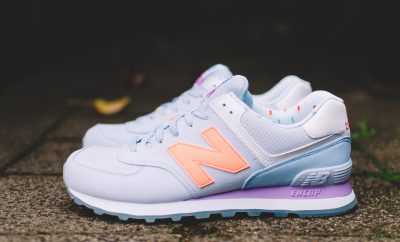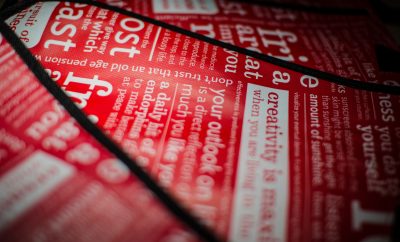 Image courtesy of [Dennis Skley via Flickr]
Image courtesy of [Dennis Skley via Flickr]
Law
Fair Use: Is it Really Fair?
In today’s world of constantly shared media, including photos, videos, and artwork, it’s easy to get confused about copyright laws. People who create content have the copyright to it, but there are some exceptions. For a long time, we’ve had the concept of “Fair Use” in American jurisprudence. Read on to learn about Fair Use, the arguments for it, and the arguments against it.
What exactly is Fair Use?
Under 17 U.S.C. 107, a person who infringes the exclusive copyright rights held by another can avoid copyright infringement liability if he proves that the infringement constituted Fair Use. Fair Use is an exception to copyright rights that is written into U.S. Copyright law. It is an affirmative defense to a copyright infringement claim, which means that if the plaintiff makes a prima facie showing of the elements of infringement and can therefore claim that the defendant did infringe on his copyright, then the defendant, in order to avoid liability, must meet the burden of proving at least a prima facie showing that Fair Use applies in his case. If the defendant succeeds, then the plaintiff will then have the burden of showing that there are insufficient Fair Use factors in the case. Whoever fails to meet their burden loses. If Fair Use is claimed it is analyzed by the courts under several fact-specific factors, including the following:
- The purpose and character of the use, including whether such use is of commercial nature or is for nonprofit educational purposes;
- The nature of the copyrighted work;
- The amount and substantiality of the portion used in relation to the copyrighted work as a whole;
- The effect of the use upon the potential market for or value of the copyrighted work.
The relevance of each factor varies with the facts of each individual case; however, the fourth factor is generally the most important. Courts are allowed to consider additional factors to the ones enumerated in the Copyright Act.
The first Fair Use factor is the “purpose and character of the use.” Courts consider whether the use comports with the intent of copyright law to engender creativity that enriches the realm of knowledge available to the public, or whether the use merely attempts to serve as a substitute for the original, serving the second creator’s financial interests. To qualify for the Fair Use defense, the user must show that the use advances the knowledge or progress of the arts by adding something new. A key consideration is whether the use is transformative or simply derivative. The Supreme Court has held that the extent of the transformativeness of a use of copyrighted material is inversely proportional to the import of factors weighing against Fair Use.
The second Fair Use factor is “the nature of the copyrighted work.” For example, courts consider whether the work is fictional or non-fictional. Also, individual facts and ideas are generally not protected under Copyright law. This factor is generally the least relevant in a Fair Use determination.
The third Fair Use factor is “the amount and substantiality of the portion used in relation to the copyrighted work as a whole.” This factor is about the amount and proportion of the work that is used without authorization. Generally, the amount used is inversely proportional to the likelihood of a finding of Fair Use; however, the use of small but important portions of a work may constitute infringement despite the minimal nature.
The last factor is “the effect of the use upon the potential market for or value of the copyrighted work.” This factor is based on whether and to what extent the unauthorized use negatively impacts the copyright owner’s ability to exploit the value of his or her own work. Courts consider whether the specific use is harmful to the owner’s financial interests and whether similar mainstream uses would be harmful. If the unauthorized work creates a market replacement for the original then that indicates harm to the copyright owner’s interests. Certain kinds of market harm can constitute Fair Use e.g. parody or criticism. Copyright protection does not shield a work from negative reviews.
What is the argument for keeping Fair Use?
Proponents of retaining the Fair Use defense argue that it is intended to allow educational and nonprofit organizations to utilize copyright material for noncommercial purposes that do not harm the interests of copyright owners without fear of litigation. These purposes are socially valuable actions that allow vulnerable members of society access to the public’s realm of knowledge. The words “educational” and “nonprofit” are even written into the Copyright Act. Moreover, the exception is not easily abused because educational value of an unauthorized use is neither dispositive nor the most critical factor. The other factors are still considered as well.
A study by numerous technology companies found that Fair Use exceptions to Copyright law were responsible for more than $4.5 trillion in yearly revenue for the U.S. economy–roughly one-sixth of the United States’ total gross domestic product. The study also found that Fair Use was responsible for more than 18 percent of U.S. economic growth and more than 11 million American jobs. Fair Use is vital to modern life in the information age.

Courtesy of Association of Research Libraries.
What is the argument against Fair Use?
Opponents of retaining the Fair Use defense argue that Fair Use is a problem because it leads to a large amount of litigation. Fair Use is commonly misunderstood by the public and emboldens many individuals into conduct that risks infringing the copyrights of owners. The law is deliberately ambiguous in order to give the courts the flexibility to make fact-specific determinations, therefore, different courts can interpret copyright law differently and it is difficult for an owner to know the extent to which his or her work will be protected from infringement.
By granting an affirmative defense to copyright infringers the law makes it more difficult for copyright owners to rely on the courts for justice. Owners may be forced to not only prove that their work is copyrighted and that it was used by the defendant, but also they may be forced to prove the absence of Fair Use as well. Fair Use also makes it more expensive and time consuming to litigate copyright infringement claims because it essentially creates two trials out of one. First, the plaintiff must make a prima facie showing of infringement, which the defendant is free to undercut and the defendant only needs to attempt to show Fair Use after the plaintiff’s burden is met. Furthermore, if Fair Use is shown, then the plaintiff has to show that it does not apply in the case. This is an unreasonable burden on the plaintiff.
Conclusion
How to protect fairness when it comes to using someone else’s copyrighted content is a complicated question. Fair Use is an answer to that question, although clearly an imperfect one. As our technology and ability to share content continues to develop, however, they may need to be revisited.
Resources
Primary
US Copyright Office: Copyright Fair Use
Additional
ARL: The Good News About Library Fair Use
Tech Dirt: Fair Use: Worth More to the Economy Than Copyright?
Wired: Study: Fair Use Contributes Trillions to U.S. Economy
Electronic Frontier Foundation: Supreme Court Gets it Wrong in Golan v. Holder, Public Domain Mourns
Blog Herald: The Limitations of Fair Use
Copyright Crash Course: Will We Need Fair Use in the 21st Century?
Columbia: Fair Use in Education and Research








Comments